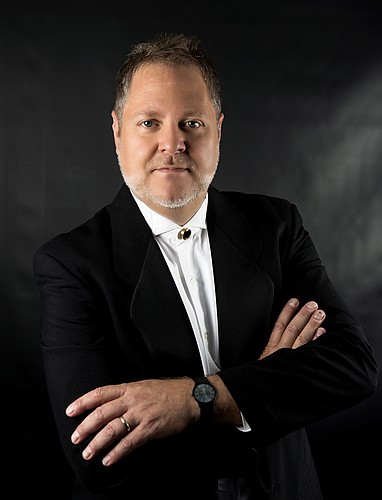- November 23, 2024
-
-
Loading

Loading

The typical choral concert consists of beautiful voices emanating from formally dressed performers standing — often statically — atop a series of risers.
The songs they sing often contain a great deal of “hallelujahs” and other lyrics in foreign (sometimes dead) languages.
But by substituting the traditional piano accompaniment for a banjo, mandolin, fiddle, acoustic guitar and string bass, you’ve got a completely different choral experience — “American Roots: Digging Deeper.”
“It’s not a sophisticated event like going to the symphony,” says guest arranger Keith Christopher. “It’s a great, easy-listening experience with melodies that the choir and audience will walk out humming.”
Key Chorale’s season opener is a follow-up to its popular “American Roots” concert from last season. Artistic Director Joseph Caulkins says the focus of that concert was to explore Colonial music, Appalachian shape note songs and a dash of bluegrass tunes. The response surprised him.
“We threw in some bluegrass to just test the waters for something that was off the wall,” he says. “That’s actually what people fell head over heels with.”
So, he decided to delve deeper into early American music this year by focusing the program on primarily bluegrass and Appalachian music. The only problem was there’s only a handful of choral arrangements in the bluegrass style in existence. That’s where Christopher comes in.
The chorale sang a piece by the arranger during the 2017 concert that went over well, so Caulkins emailed Christopher in May to see if he’d be interested in creating three new arrangements for “American Roots” 2.0. His response was an enthusiastic “yes.”
Caulkins shared his vision of the concert with Christopher, who sat down at his piano and started playing with chord progressions. With the director’s vision in mind, he began shaping pieces by deciding how they should start, develop and what key they should end in.
As he worked, Christopher occasionally sent drafts to Caulkins, who would provide feedback to ensure the pieces were what he wanted.
“I had freedom but tried to stay in the boundaries of what he wanted,” the arranger says.
The only obstacle Christopher faced during the arranging process was ensuring his three pieces were cohesive yet also different.
“I didn’t want it to sound like three of the same, so even within the bluegrass style I tried to vary things like tempo and dynamics, solo singing with some choir backup, starting a song with a solo then the choir coming in,” he says. “I tried to make them each have a distinct kind of flavor.”
They’re all songs that already existed but have never been adapted for a choir, so Christopher took pieces he knows well and added his own touch.
“Just Over in the Gloryland” is the most upbeat of the three, he says, and it ends with a big finish, whereas “Life’s a Railway to Heaven” closes with a softer, more reflective ending.
The last of the three, “The Unclouded Day,” begins a cappella before the instruments sneak in, he says, adding some contrast while still maintaining the same style as the others.
Caulkins arranged three pieces for the Appalachian music portion of the program, which focuses on the shape note tradition.
This style of singing, the Library of Congress says, originated in the 19th century and used notes in different shapes to help teach singing. One of the most recognizable examples is when vocalists sing the notes “fa, sol, la, mi,” to learn or practice a tune.
The style gained momentum in the South and became popular in Christian hymnals sung by church choirs. This connects nicely with the bluegrass music of the program because, Christopher says, that style is rooted in gospel church tunes, many of which he was raised on.
Asked why there aren’t more choral pieces adapted from bluegrass songs, Christopher says it’s not because it’s hard to arrange a bluegrass piece for a choir. He thinks it has more to do with the niched nature of the style and how far it is from standard choral repertoire.
“If you love it, you love it and if you don’t, you don’t,” he says. “It’s reflective in a really joyful kind of way … No meditative moments, no hallelujahs.”